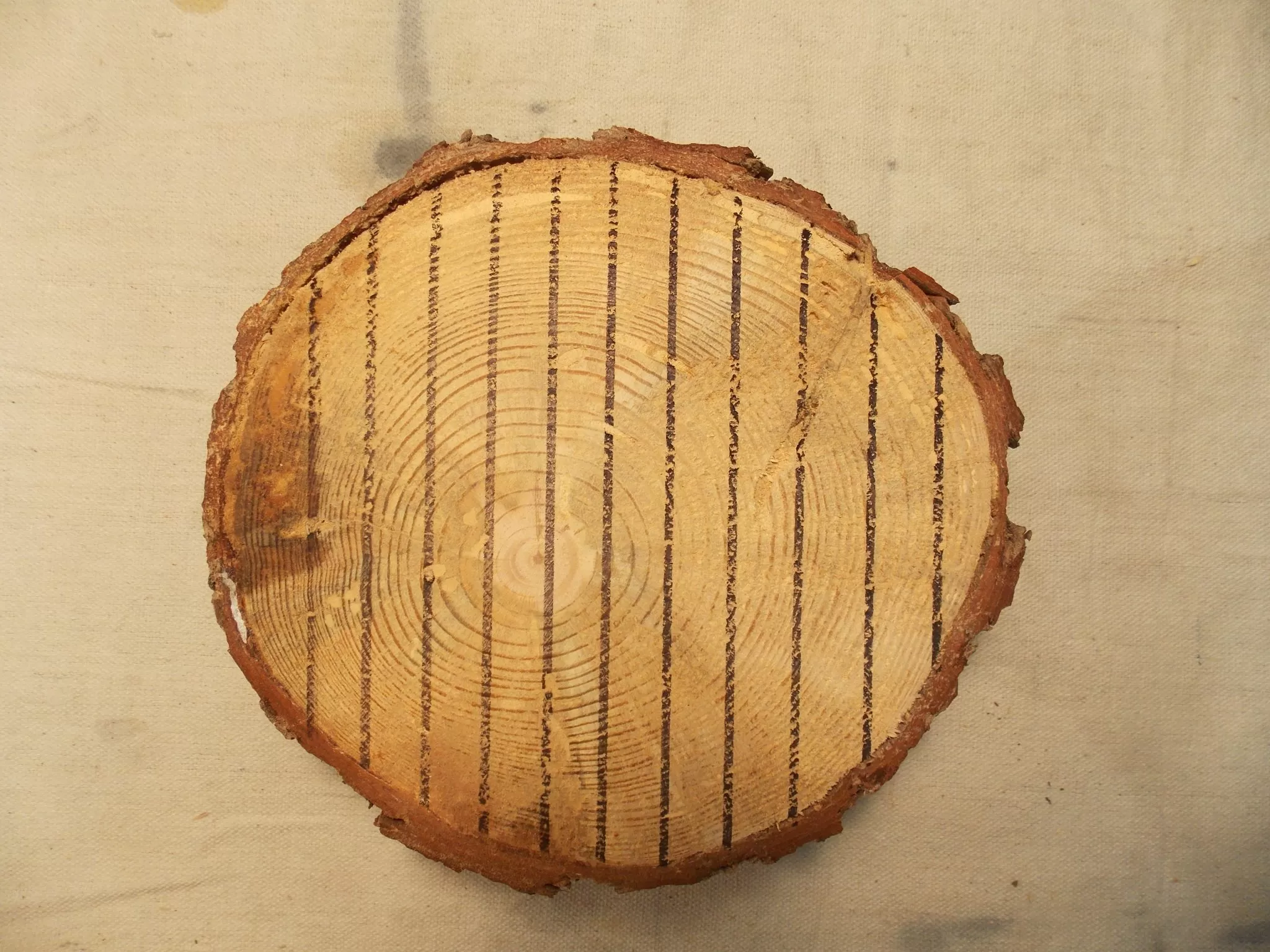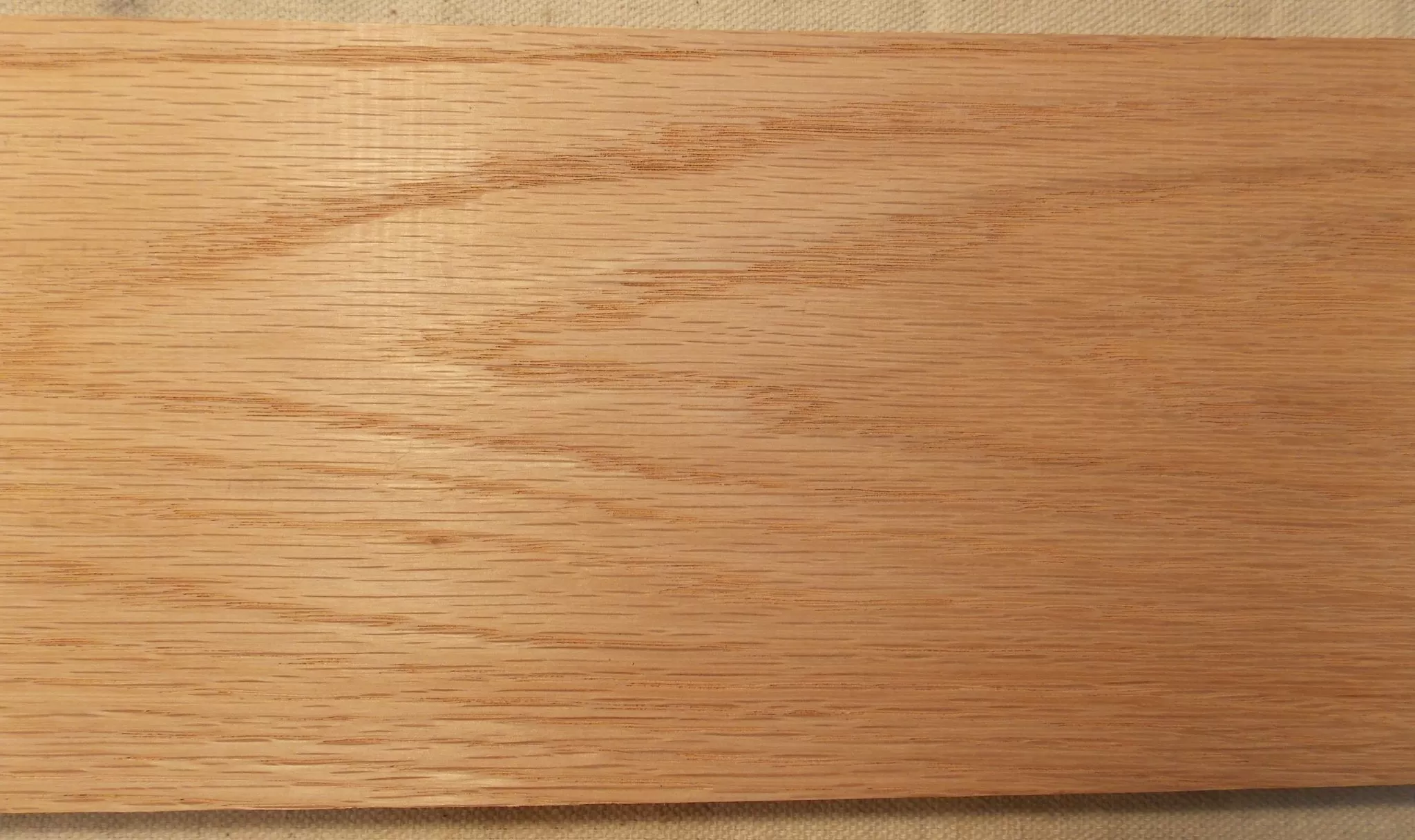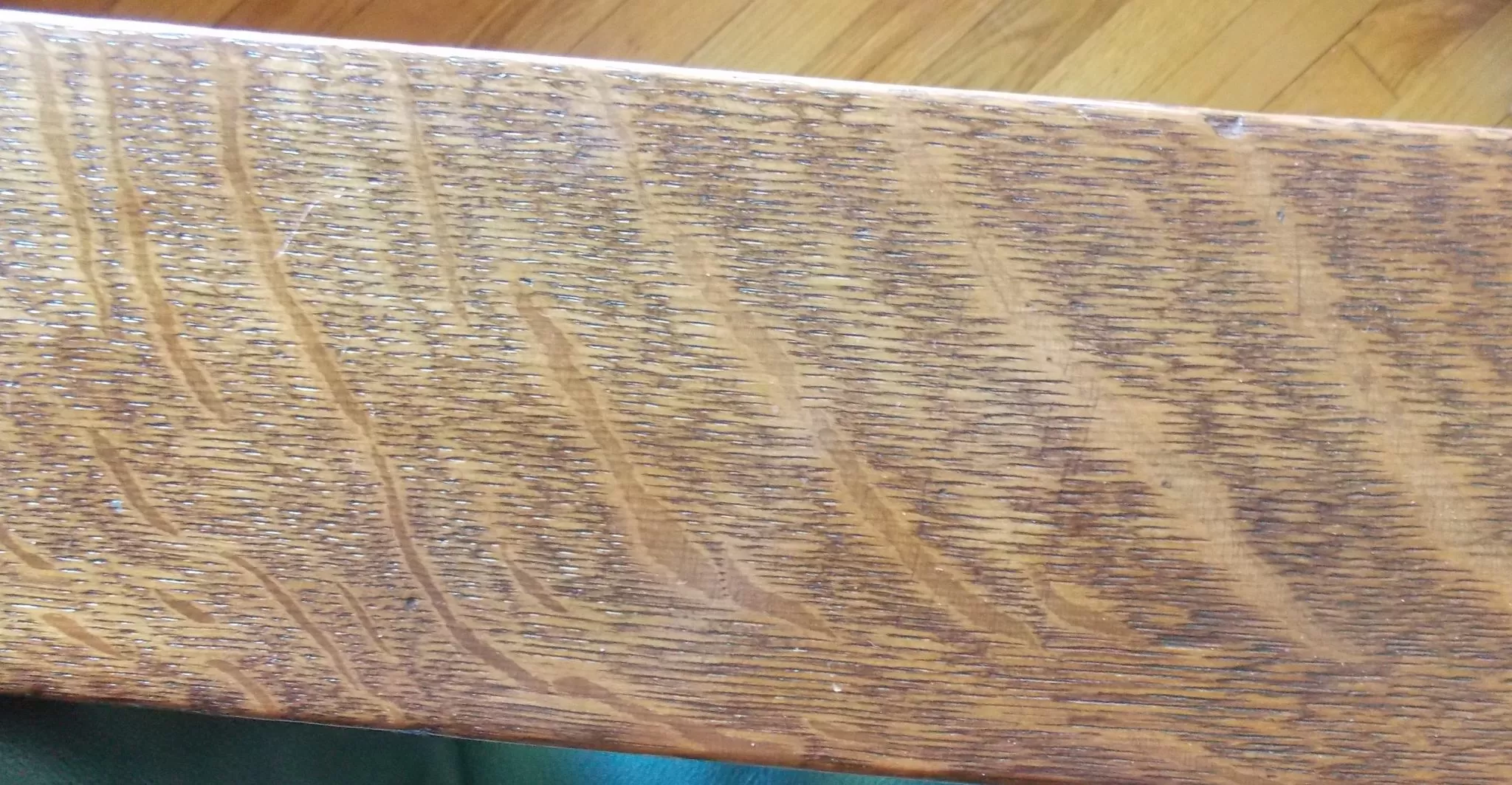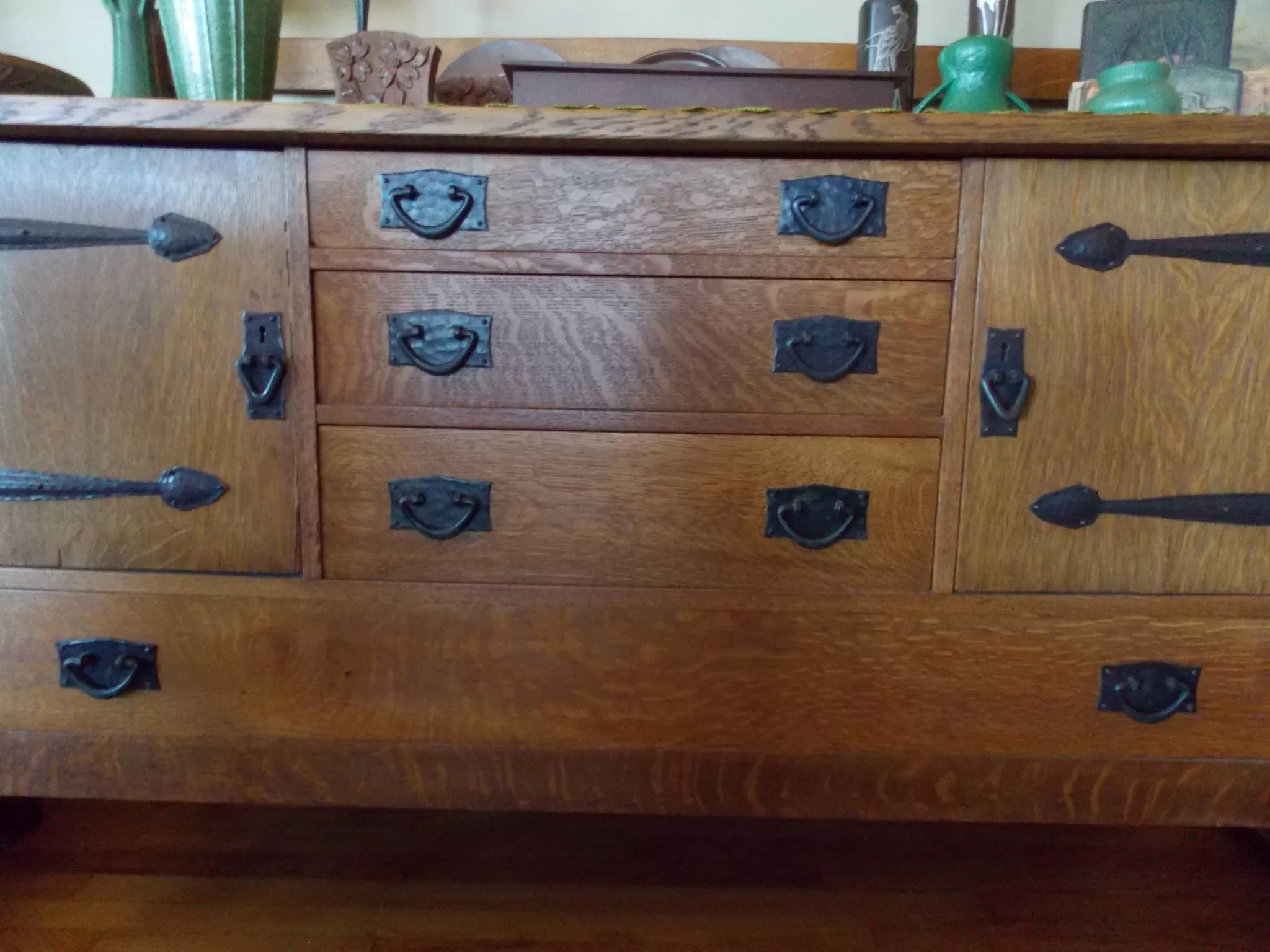Quartersawn, Plain Sawn or Rift?
At last February’s National Arts and Crafts Conference at the Grove Park Inn, a young couple pulled me aside in the antiques show and apologetically asked if I could explain to them the difference between plain sawn, quartersawn, and rift sawn oak. With hundreds of examples gathered in the Grand Ballroom, showing them how to identify and distinguish each type of grain pattern was easy to do.
Which also prompted me to provide a brief explanation of each here as well.

Plain sawn lumber is the most dominant in home improvement stores, as it is the most efficient method to mill lumber. The log is placed on the traveling bed and sliced from end-to-end, working from one side to the other. This produces boards with a wavy grain pattern seen below.

Quartersawn lumber, also called “tiger oak,” is prized in Arts and Crafts antiques, as its bold, medullary rays angling across the grain of the wood provide all the decoration any board could need.

But to expose the medullary rays inside the log, it must first be cut into quarters, then sliced at an angle. As shown in the drawing, this produces boards much narrower than plain sawing, but the quartersawn boards, such as the one shown below, are less prone to warping.

The plain sawing method also produces a board or two from each log in which the medullary rays are also exposed, although not to the dramatic extent that they are in quartersawing. These are called “rift sawn” boards. If you sort through enough plain sawn oak boards at a home improvement store, you will find a few rift sawn boards like the one pictured below.


Knowing the difference between these three types of boards will enable you to become a more savvy collector, and will help explain why an abundance of quartersawn boards in an piece of Arts and Crafts furniture, like this Gustav Stickley sideboard, makes it more desirable.
by Bruce Johnson
